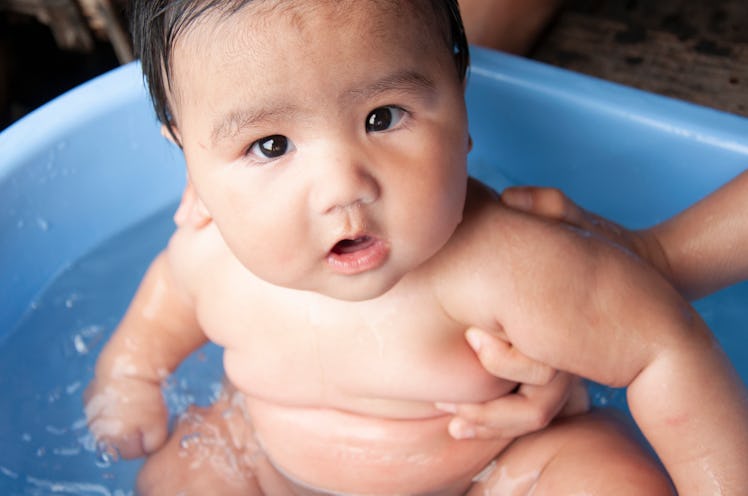How To Tell If Your Chubby Baby’s Fat Is A Health Concern
There's a fine line between baby fat and a fat baby. Here's how parents can tell the difference.

Few things in this world are more universally adored than a chubby baby. As much as fathers may strive to stay fit, fend off the dad bod or just embrace their lovable big guy selves, their babies are encouraged to become adorable bundles of baby chub and fat rolls. Most dads strive to lose face fat, but absolutely everyone likes to see pinchable cheeks on a chubby baby. After all, baby chub eventually goes away and is harmless, right? Well, not always. Here’s everything parents need to know about chubby babies, those adorable baby fat rolls, and if your baby is too fat for their own good.
Why Is My Baby So Fat?
The true “baby fat” connected almost exclusively to newborns is called brown adipose tissue, or BAT for short. BAT hangs out along your newborn’s spine and shoulders and has a very specific function linked to your kid’s survival in the big bad world.
In adults, there are tons of ways for a body to regulate temperature, including shivering. But your kid can’t shiver. They also can’t make (or drink) a hot toddy and buy puffy North Face vests. So BAT essentially provides the North Face and toddy warmth to your newborn through a trick called thermogenesis.
Is My Baby Too Fat?
The non-BAT fat your chubby baby sports is regular old “white fat.” You know, the kind found on your ass. White fat, unlike BAT, does reside in all the cute places like the cheeks and thighs. It makes a baby look healthy and well-fed and generally jolly.
However, there’s a downside to a too-plump baby. Too much white fat can interfere with your kid’s ability to reach crucial developmental milestones such as crawling and walking. More than that, some studies show that children who grow too big in early infancy could be jacking up their future BMI. And that probability only gets worse the longer the baby fat rolls stick around.
Growth charts are a great way to help you and your doctor understand if your baby is too fat. These charts compare your kid’s length to their weight. Anything above the 98th percentile might be cause for concern. But aside from monitoring, there’s not much you can do about a too chubby baby. Calorie restriction, for instance, is a huge no-no for kids under 2.
There are, however, a couple of things you can do to intervene. Chief among these is figuring out an appropriate way to soothe your kid that doesn’t involve a nipple to the face. (Or, for that matter, a TV.) In the meantime, go ahead and tickle that baby chub.
This article was originally published on